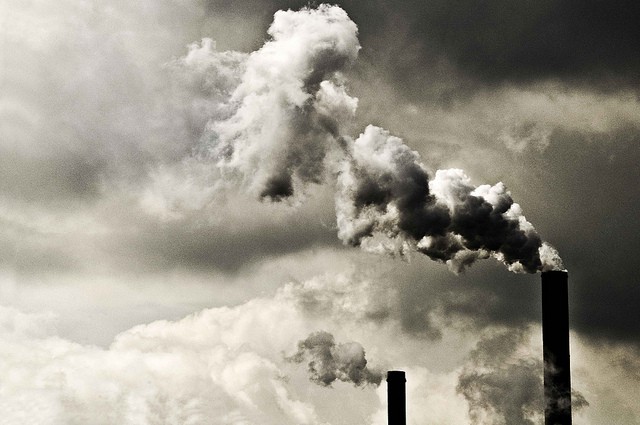It’s indeed serious that the emissions from coal-fired power plants are now higher than ever before to quench the growing energy thirst of the world in addition to the increasing planet-warming carbon-dioxide emissions, as per the findings released by global energy experts on Monday.
According to the International Energy Agency report, the growth in the demand of the energy by 2.3 percent over the past year has been marked as the most rapid increase in a decade. Countries are looking for an array of sources, including renewable to meet the demand of the booming economy.
However, there is nothing at par with fossil fuels that provide 70 percent of the skyrocketing electricity demand as per the analysis of energy trends of 30 member countries, including the US made by the agency.
In Asia there is a record emission from coal-fired power plants due to a fleet of relatively young coal plants with pretty long lifetime — exceeding 10 billion tons of carbon dioxide “for the first time,” the agency said. In Asia, “average plants are only 12 years old, decades younger than their average economic lifetime of around 40 years,” the agency found.
The result is a record high emission of greenhouse-gases that surged in 2018 reaching 33.1 billion tons with a growth of 1.7 percent that is well above the average since 2010. The growth in global emissions in 2018 alone was “equivalent to the total emissions from international aviation,” the body found.
Despite repeated hammering on the issue, the collective efforts of the world to combat climate change has been underscored in the report. Even though renewable energy is expanding rapidly, many countries including the United States and China still opting for fossil fuels to fulfill the ever-growing demand for energy.
“Very worrisome” is how Michael Mehling, deputy director of the Center for Energy and Environmental Policy Research at the Massachusetts Institute of Technology, described Monday’s findings.
“To me, all this reflects the fact that climate policies around the globe, despite some limited pockets of progress, remain woefully inadequate,” he said in an email. “They’re not even robust enough to offset the increased emissions from economic expansion, especially in the developing world, let alone to spur decarbonization at levels commensurate with the temperature stabilization goals we’ve committed to under the Paris Agreement.”
Whether the Paris climate agreement — the 2015 global accord, can compel nations to stick to their promises to slash their carbon emissions and boost up climate action over time, Mehling questioned.
“This will require overcoming the persistent barriers that have prevented greater progress in the past,” Mehling said, and it is clear from the agency report that overcoming those barriers is complicated.
Although countries like China and India satisfy some demand of more energy by renewable energy, they rely more on natural gas, coal, and oil including the US where coal is declining but more natural gas is put to use. Though natural gas when burned emits less carbon dioxide compared to coal, still it’s a fossil fuel and causes significant emissions. However, the good news is that now coal has a smaller share of the overall energy pie with renewables and natural gas having a comparatively larger share.
The U.N. Intergovernmental Panel on Climate Change found in a major report last year that global emissions would have to be cut nearly in half, by 2030, to preserve a chance of holding the planet’s warming to 1.5 degrees Celsius (or 2.7 degrees Fahrenheit). However, tragedy is instead of reducing the emissions extremely fast annually; the world is still marking record highs.
The usage of coal as found by the same report should be reduced by as much as 78 percent in just over 10 years to limit temperatures to 1.5 degrees C, but it is still rising.
“The growth in fossils is still greater than all the increases in renewables,” Rob Jackson, a professor of Earth system science at Stanford University said, adding that few countries are living up to the pledges they made as part of the Paris climate accord. “What’s discouraging is that emissions in the U.S. and Europe are going up, too. Someone has to decrease their emissions significantly for us to have any hope of meeting the Paris commitments.”
From 2014 through 2016, global emissions fell slightly, but with the renewal of growth in 2017 and record highs in 2018, there is little hope that International efforts will be able to maintain the momentum needed to combat climate change and there has also been a reversal of priorities on the part of U.S. government.
“We are in deep trouble,” Jackson said of Monday’s findings. “The climate consequences are catastrophic. I don’t use any word like that very often. But we are headed for disaster, and nobody seems to be able to slow things down.”






